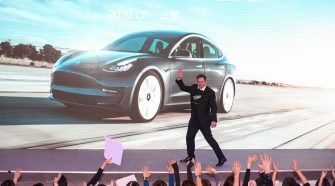I’ve been reading and rereading novels of the great writer Ursula K Le Guin over the past year, and they have had me thinking about the difficulty of writing about technologies that will (or won’t) be in use in one’s imagined future worlds.
Much has been written about the influence of science fiction on eventual science fact. Although writers and filmmakers create fanciful worlds, many of their tech fictions have shaped the actual technologies we end up with years later.
The topic even features in serious academic work. One 2018 study examined how often science fiction has been referenced in papers presented at a top international conference on human-computer interaction, noting: “Sci-fi movies, shows or stories do provide an inspiration for the foremost and upcoming human-computer interaction challenges of our time, for example through the discussion of shape-changing interfaces, implantables or digital afterlife ethics”.
When science fiction creates particularly compelling representations of future technologies, people remember them. Later on that fictional tech can seem an obvious way of realising the possibilities of real-world technologies when technical capabilities advance.
Star Trek is regularly referenced in this connection, and little wonder: the technologists designing the first 20th century iterations of personal tech were the 1960s kids who grew up with TV Star Trek and 2001: A Space Odyssey.
No surprise then that mobile handsets might seem an obvious step along the way towards Trekian communicators, with the mid-90s Motorola flip clamshell model paying obvious homage in its StarTAC name.
Then there were the Enterprise’s touchscreens and its speaking computer. iPads and iPhones and Alexa and Siri, anyone?
Many years ago I interviewed a number of leading voice technology experts and every one referenced Star Trek and 2001 as inspirations. New generations of technologists will have a further half century of screen and fiction technologies to inspire tomorrow’s devices.
New technologies
And yet it can take time for us to adapt to new technologies even when we’ve been given them in fictional format. Again take mobiles. For a lot of us (okay, me) who became the first generation of untethered mobile phone-users in the 1990s, a mobile sure didn’t seem like an obvious mass market device.
Which brings me back to Le Guin. I’ve been reading her novel The Lathe of Heaven, considered one of her best. Written in 1971 and set in Portland, Oregon, it’s a dystopian tale set (then) in a future in which climate change and overpopulation has created a bleak, impoverished world.
The climate element is eerily spot on. So-called “cli-fi”, a term coined in 2007 for climate-related fiction, might seem a more recent invention but – step aside Al Gore – Le Guin pretty much nailed the how and why of the reality we are living through. Her overpopulated earth is trying to accommodate seven billion people, a number we’ve surpassed.
The reader eventually discovers that events are unfolding in … 2002. Yikes: in what is now our own past.
A minor detail has preoccupied me. On her future earth there are phones. But, jarringly, there aren’t mobile phones. Characters use landlines. They do not even have anything like an answering machine connected to the phone.
Plot elements involve people not answering their landlines. And yet there are other advanced technologies, such as a device that enables a researcher to manipulate the brain during sleep.
Futurescape
This landline-only futurescape creates an odd feeling of anachronism. By the 1980s the first mega-brick “mobiles” were in use by shouty financial sector yuppies. By 2002 about half the US population had a mobile phone.
Noticing this is not to critique Le Guin. I’d wager science fiction writers do at least as well in guessing what might come next as professional futurologists, the people paid to apply their noggins to this task.
Instead what really intrigues me is how this case of the missing mobile phones exemplifies how hard it can be for any of us, much less the finest of science fiction writers, to imagine the mundanities of how long-standing technologies might morph into something utterly new.
Add in uncertainty about what the general public might want and use. And, of course, what technologists think people will use a device for is often not what it gets used for – as writer William Gibson famously noted in a novel, “the street finds its own uses for things”.
In retrospect, the incremental microchip-enabled changes that replaced landlines with powerful pocket computers, where the ability to make a phone call is now a minor if useful feature, were neither obvious nor a foregone conclusion even in the 1990s, much less the 1970s.
It’s the very human flip-side of the supposed “science fiction predicts our future technologies” truism. Sometimes futuristic fiction later foregrounds how hard it can be to see what is wrongly believed to be “the obvious”.
In this sense Le Guin makes me (as always) feel a bit more human – this time (like the 1990s me) in really not having seen that amazing phone revolution coming at all.
Business Today
Get the latest business news and commentarySIGN UP HERE
















